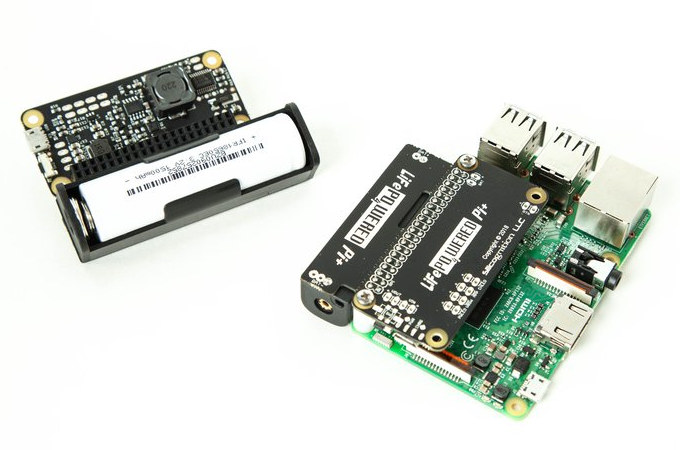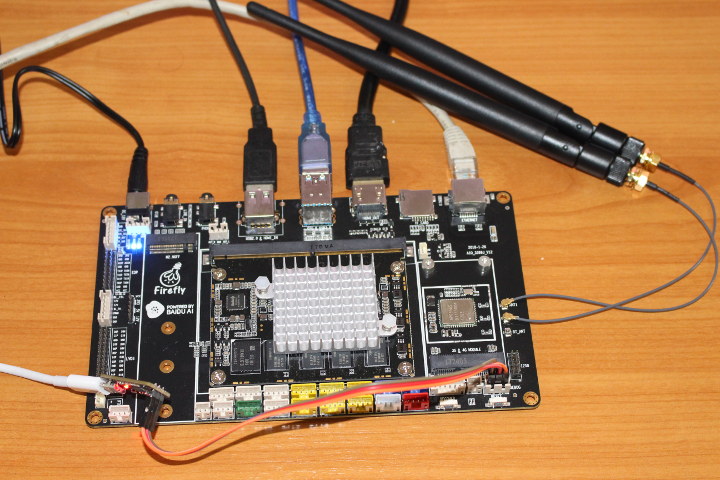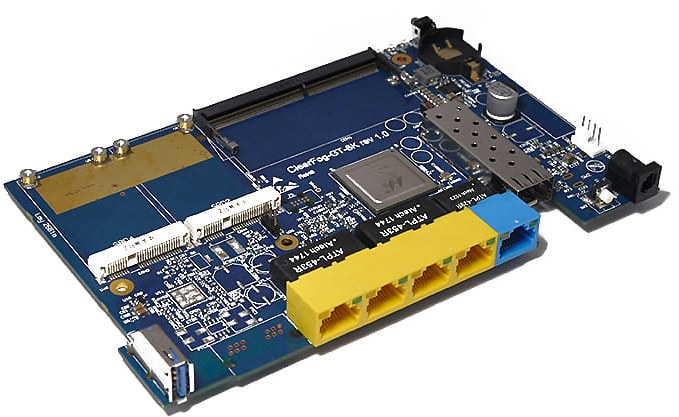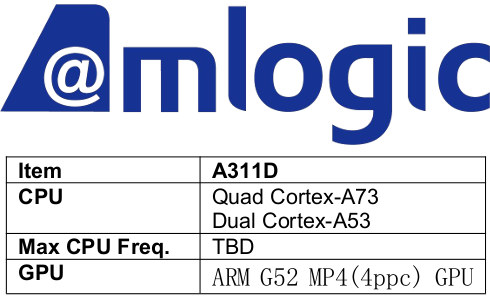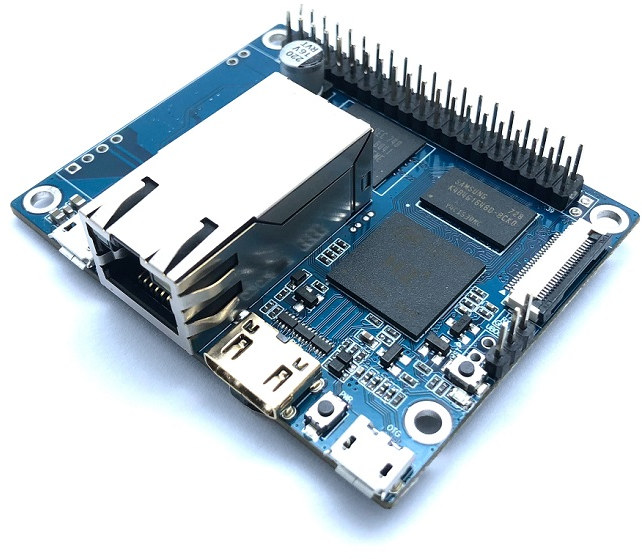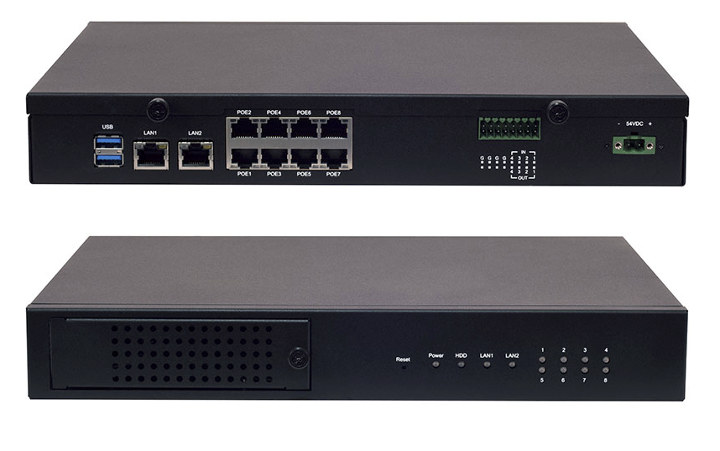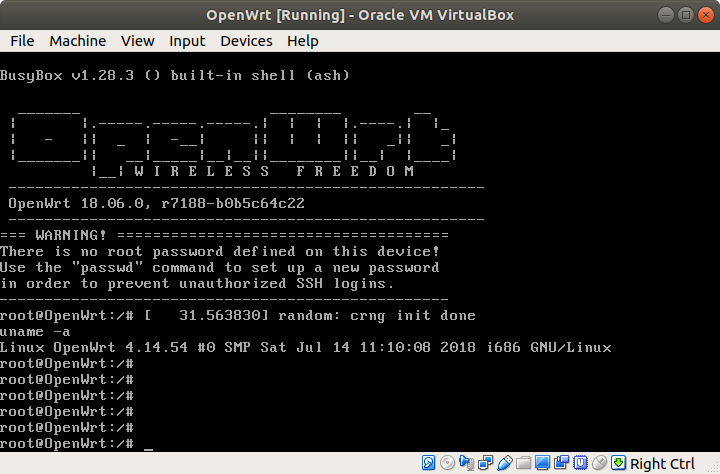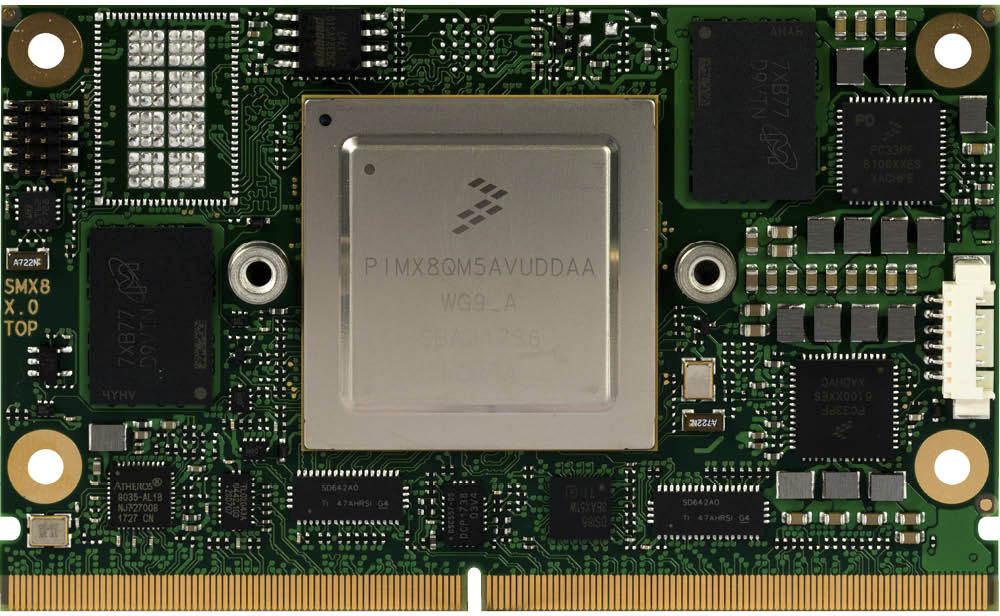We’ve already covered several UPS solution for Raspberry Pi boards, but LiFePO4wered/Pi+ is a little different because instead of relying on LiPo (Lithium Ion Polymer) batteries, it comes with LiFePO4 (Lithium Iron Phosphate) battery which are said to be safer and longer-lasting albeit at the cost of lower capacity. LiFePO4wered/Pi+ specifications: Two battery size options: 18650 size – 1,500 mAh 3.2 V LiFePO4 cell with up to 2A max continuous load current 14500 size – 600 mAh, 3.2 V LiFePO4 cell with up to 0.75 A max continuous load current Smart charge controller – Over-charge protection, auto-adjusting charge current, customizable maximum power point (MPP) voltage Smart power manager: I2C communication Power manager and daemon – work together to ensure clean shutdowns and provide over-discharge protection Continuous monitoring – input voltage, battery voltage, output voltage, and load current On/off button Green PWR LED & Red CHRG LED Wake timer – Wakes […]
AIO-3399J Development Board Review with Ubuntu 16.04
Regular readers will know that Firefly team sent me several of their Rockchip boards for evaluation, and I started with a review of ROC-RK3328-CC development board powered by Rockchip RK3328 processor. This time, I went with the high-end AIO-3399J board comprised of a features-packed baseboard and a Rockchip RK3399 system-on-module. Just like with the previous review, I’ve decided to focus on Linux support, in this case Xunbuntu 16.04, and I’ll do an Android review on the company releases Android 8.1 for Firefly-RK3399 board. First Boot with AIO-3399J Board Before booting the board, I inserted the heatsink, and connected the provided WiFi antennas. I also connected some devices and cables, including a mouse, the male to male USB cable to the top USB 3.0 (OTG) port for firmware update, a HDMI cable to my TV, and Ethernet cable, as well as the serial debug board. The final step was to connect […]
ClearFog GT 8K is a High-End Networking SBC Powered by Marvell ARMADA A8040 Processor
A few years ago, SolidRun launched ClearFog Pro and Base router boards based on Marvell ARMADA 388 Armv7 (32-bit) processor, and about a year later, the company introduced MACCHIATObin networking board powered by a more powerful Marvell ARMADA 8040 quad core Cortex A72 processor. The company has now given an upgraded to its ClearFog family with ClearFog GT 8K networking board powered on the same ARMADA A8040 processor as on the community board, and offering support for up to 16GB RAM, 6 network interfaces including one 10GbE SFP+ cage , and three mPCIe slots. ClearFog GT 8K specifications: SoC – Marvell ARMADA A8040 quad-core Cortex A72 processor up to 2GHz (commercial), up to 1.6 GHz (industrial) Memory – DIMM slot for up to 16GB DDR4 Storage – Up to 128GB eMMC flash, 64 Mbit SPI flash, micro SD slot, M.2 SSD via optional M.2 mPCIe adapter Connectivity 4x 1GbE switched LAN […]
Amlogic A311D Media Processor Features Cortex A73/A53 Cores, an Arm Mali-G52 MP4 GPU
As far as processors are concerned, it’s been pretty quiet in the TV box space in this year with for example, devices based on Amlogic S922 yet to launch, and new TV boxes are normally launched with processors such as Amlogic S905X/Z/W or S912, as well as Rockchip RK3328 or RK3229. But this morning, I’ve been informed that Amlogic is working on a more powerful media processor based on info from buildroot release notes Amlogic A311D is an hexa-core processor featuring four Arm Cortex A73 cores, two Cortex A53 cores, and an Arm Mali-G52-MP4 GPU. Amlogic A311D specifications known so far: CPU – 4x Arm Cortex A73 @ TBD GHz, 2x Arm Cortex A53 GPU – Arm Mali-G52 MP4 Memory I/F – DDR3/4; LPDDR3/4 Storage I/F – eMMC, SD/SDHC/SDXC Video Output – HDMI Tx up to 4K2K @ 60 Hz with CEC & HDR support, CVBS Video Processing Unit (VPU) […]
Banana Pi BPI-P2 Zero Board Combines PoE, Camera Interface, and Allwinner H2+ Processor
Allwinner H2+ quad core Cortex A7 processor has enabled some of the cheapest Arm Linux boards on the market with products such as NanoPi Duo or Orange Pi Zero with the latter now selling for about $9 and up. SinoVoIP also had their own inexpensive – and Raspberry Pi Zero compatible – Allwinner H2+ board with Banana Pi M2 Zero, and the company has now been working on another model dubbed BPI-P2 Zero which includes support for PoE (Power-over-Ethernet) as well as a CSI camera interface. Banana Pi BPI-P2 Zero specifications: SoC – Allwinner H2+ quad core Arm Cortex A7 processor with Mali-400MP GPU. System Memory – 512MB DDR3 SDRAM. Storage – 8GB eMMC flash, micro SD card slot Video Output – mini HDMI port Connectivity 10/100M Ethernet with PoE support WiFi & Bluetooth via AP6212 module Camera I/F – CSI camera interface USB – 1x USB OTG port Expansion […]
Lanner NVA-3000 Machine Vision Computer is Equipped with 8 PoE+ Ports
Lanner Electronics, a company headquartered in Taiwan, and specializing in network appliances and rugged industrial computers, has recently introduced NVA-3000 embedded computer powered by Intel Pentium N4200 or Atom x7-E3950 “Apollo Lake” processor, and targeting video surveillance & machine vision applications with 8 PoE+ ports. Lanner NVA-3000 specifications: SoC Model NVA-3000A – Intel Pentium N4200 quad core Apollo Lake processor @ 1.10 / 2.50 Hz with 18 EU Intel HD graphics 505; 6W TDP Model NVA-3000B – Intel Atom x7-E3950 quad core Apollo Lake processor @ 1.60 / 2.00 GHz with 18 EU Intel HD graphics 505; 12W TDP System Memory – 4GB LPDDR4 2400MHz via 1x SO-DIMM slot Storage 32Mbit SPI Flash for BIOS, 2x SATA ports, 1x 3.5″ SATA/SSD drive bay, eMMC flash Model NVA-3000A – 8GB capacity Model NVA-3000B – 64GB capacity Network Connectivity Ethernet controller – Intel I210IT, I210IS, Marvell 88E6390 Ethernet Switch, 88E1512 PHY 2x […]
OpenWrt 18.06 is the First Release Since OpenWrt and LEDE Projects Merger
LEDE (Linux Embedded Development Environment) was forked from OpenWrt project in 2016 due to disagreements among developers, and this lead to LEDE 17.01.0 “Reboot” release the following year. But eventually, developers must have realized that running two separate and similar projects in parallel was not the best way to go, and OpentWrt and LEDE projects were re-merged right at the beginning of this year. So I’m pleased to announced the developers have now introduced the first release out of the new partnership with OpenWrt 18.06. OpenWrt 18.06 is actually the first major release since LEDE 17.01, as the previous OpenWrt release was version 15.05. It focuses on support for network flow offloading and modernizing Atheros AR71xx target, brings updates to kernel and package, as well as other improvements and fixes. You’ll find the binary packages for your hardware on the rtargets page, and the source code is hosted on Github. […]
Congatec conga-SMX8 is a SMARC 2.0 Module Based on NXP i.MX8 Processor
We’ve already seen some SMARC 2.0 SoM based on NXP i.MX8 processor with for instance, i.MX 8M based SECO SM-C12. We now have at more choice thanks to Congatec which just announced conga-SMX8, the company’s first SMARC 2.0 Computer-on-Module based on the NXP i.MX8 Arm Cortex-A53/A72 processor. conga-SMX8 SoM specifications: SoC (one or the other) NXP i.MX8 Quad Max with 2x Arm Cortex-A72, 4x Arm Cortex-A53, 2x Arm Cortex-M4F, 2x Vivante GC7000XSVX GPU NXP i.MX8 QuadPlus with 1x Arm Cortex-A72, 4x Arm Cortex-A53, 2x Arm Cortex-M4F, 2x Vivante GC7000Lite/XSVX GPU NXP i.MX8 DualMax with 2x Arm Cortex-A72, 2x Arm Cortex-M4F, 2x Vivante GC7000Lite/XSVX GPU System Memory – Up to 8 GB LPDDR4 memory | 3200 MT/s Storage – Up to 64GB eMMC flash, micro SD 3.0 card socket Other On-Module Chips 2x Gigabit Ethernet transceiver Optional M.2 1216 WiFi module (soldered down) USB hub 314-pin MXM Edge connector with Storage […]


